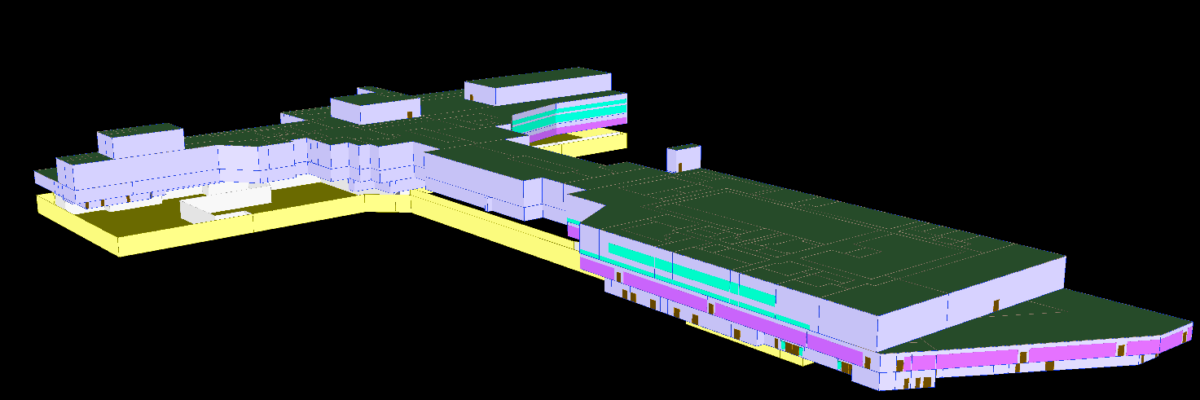When embarking on the journey of building a new facility, the stakes are high. Every decision made during the design phase has a ripple effect, impacting not only initial capital expenses but also long-term operating costs. One often overlooked tool that can yield substantial savings across various building types is building energy modeling.
Much like a home inspection uncovers hidden issues and potential savings for prospective homeowners, building energy modeling offers invaluable insights for architects and facility designers. Yet, despite its proven benefits, a mere fraction of project owners opt for energy modeling due to perceived upfront costs.
A Costly Omission: Why Building Energy Modeling Matters
Failing to integrate building energy modeling into the design process is akin to building a house without inspecting it. It may seem like a small expense saved initially, but the long-term consequences can be significant. By leveraging building energy modeling, project owners can make informed decisions that not only enhance energy efficiency but also result in substantial savings, both in terms of capital and operating expenses, for all types of buildings, from offices and schools to hospitals and retail spaces.
Building Energy Modeling: A Versatile Tool
Building energy modeling is a sophisticated software-based tool used during the design phase to quantify and optimize energy usage for any building type. It goes beyond simple calculations, creating a virtual model of the facility. This model incorporates various factors, including:
- Building design (envelope, insulation, windows)
- Internal loads (occupancy, equipment)
- Mechanical systems (HVAC, lighting, plumbing)
By simulating real-world conditions, energy modeling software provides a comprehensive analysis of:
- Energy consumption (electricity, natural gas, etc.)
- Peak fuel demands
- Carbon emissions and environmental impact
- Water usage
- Potential for renewable energy integration
Beyond Design: Applications of Building Energy Modeling
The power of building energy modeling extends far beyond the design phase. Here are some additional applications:
- Code Compliance: Building energy modeling can help ensure a building design meets energy efficiency requirements stipulated in local building codes.
- LEED Certification and Green Globes Certification: Energy modeling plays a crucial role in achieving points towards green building certifications like LEED and Green Globes by demonstrating the building’s projected energy performance.
- Energy Studies and Retro commissioning: Building energy modeling can be used to compare different energy-saving retrofit options and predict the impact of various retro commissioning measures on a building’s energy usage. This allows building owners to make informed decisions about energy-saving upgrades.
Tailoring the Model to Different Building Types
The specific approach to building energy modeling will vary depending on the building type. While office buildings might prioritize daylighting strategies and efficient lighting systems, hospitals may focus on optimizing air handling units and sterilization equipment. An experienced energy modeler can customize the model to account for these specific needs and building functions.
Unlocking Cost Savings and Sustainability Benefits
Building energy modeling facilitates informed decision-making across various aspects of design and operations, leading to:
- Reduced capital expenditures: By comparing energy efficiency ratings of equipment and materials, building owners can identify cost-effective choices that deliver long-term savings.
- Lower operating costs: Optimizing energy use throughout the building’s lifecycle can significantly reduce utility bills.
- Enhanced sustainability: Building energy modeling helps identify strategies to minimize environmental impact, such as reducing greenhouse gas emissions and water usage.
Maximizing the Benefits of Building Energy Modeling
To fully capitalize on the potential of building energy modeling, project owners should:
- Initiate the process early in the design phase to allow for adjustments based on the model’s outputs.
- Gather detailed input from all relevant disciplines, including architects, engineers, and sustainability consultants.
- Perform rigorous building energy simulations to analyze various design options and identify the most energy-efficient approach.
- Strategically apply model outputs to inform decision-making throughout the design and construction process.
Realizing the Value of Building Energy Modeling: A Smart Investment
While the upfront cost of building energy modeling may seem daunting, the return on investment (ROI) is often swift and substantial. Studies have shown that energy modeling can yield cost savings of 20% to 30% over the life cycle of a building. By leveraging the expertise of experienced energy modelers, project owners can unlock significant financial benefits and ensure the long-term efficiency and sustainability of their facilities.
In conclusion, building energy modeling is not just a tool; it’s a strategic imperative for maximizing savings, enhancing efficiency, and driving sustainability in all types of buildings. By embracing building energy modeling early and integrating it seamlessly into various project stages, from design to retro commissioning studies, project owners can create a brighter, more sustainable future.
Are you ready to unlock the financial and environmental benefits of energy modeling? Contact Amir Salari, PE, LEED AP, CEA at NV5 today. We’ll guide you through the process, helping you achieve your sustainability goals while maximizing the value of your property.

